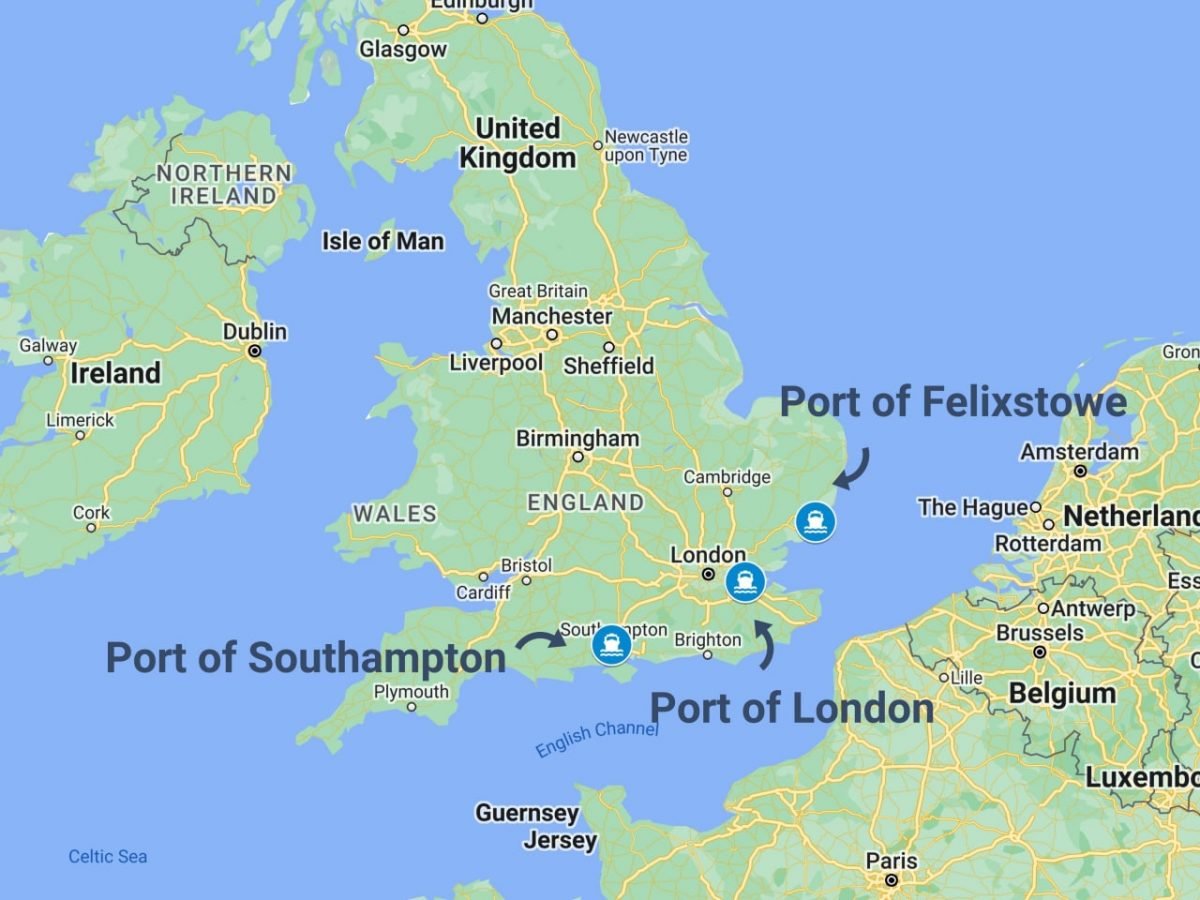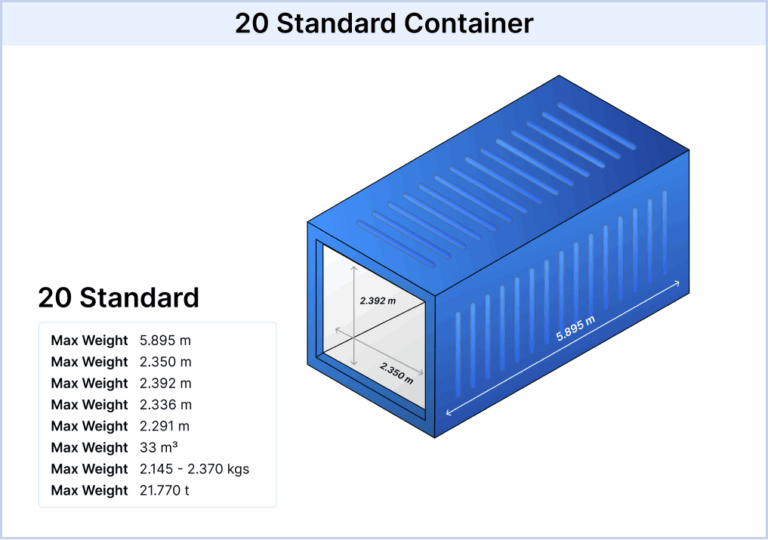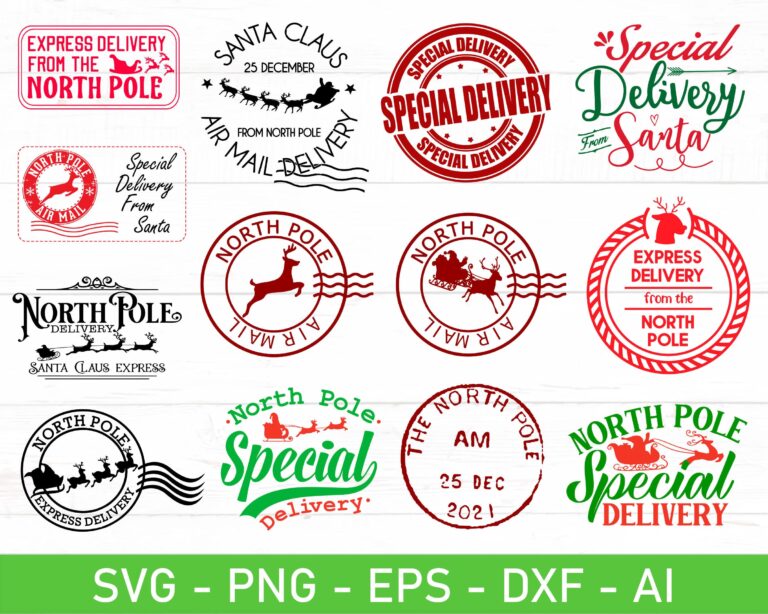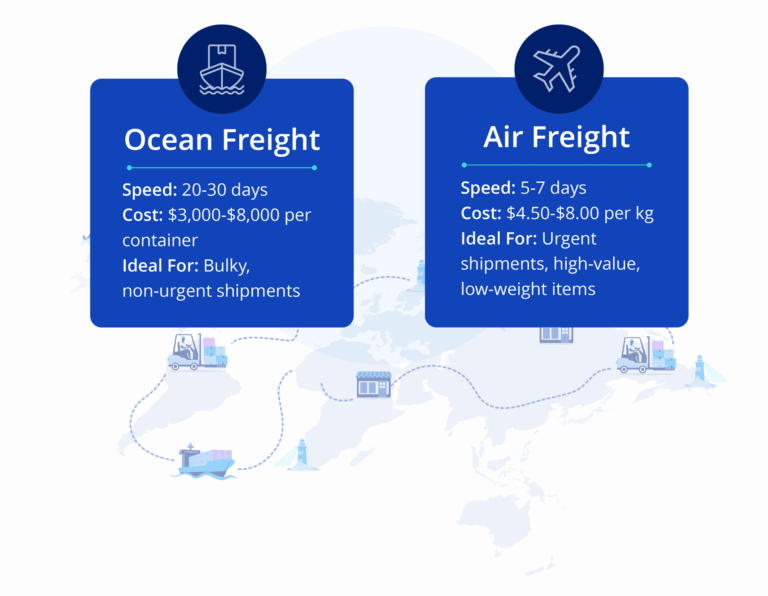The Definitive Guide to Shipping From Us To England: Rates, Transit…
Your Complete Guide to shipping from us to england
Navigating the Complexities of Shipping to England
Shipping goods internationally can be a daunting task for businesses, particularly when navigating the intricate web of regulations, costs, and logistics involved in transporting items from the U.S. to England. One of the foremost challenges faced by international shippers, importers, and exporters is ensuring that their shipments comply with both U.S. and U.K. customs regulations while managing the associated costs and timelines. With the ever-evolving landscape of trade agreements, tariffs, and logistical requirements, it’s essential for businesses to stay informed and prepared.
In this comprehensive guide, we will delve into the key areas that will empower you to streamline your shipping processes to England.
Shipping Methods
Understanding the various shipping methods available is crucial for selecting the right option for your business needs. We will explore the range of services offered by major carriers such as USPS, DHL, and FedEx, and help you identify which service aligns best with your delivery requirements, whether you prioritize speed, cost, or reliability.
Costs and Pricing
Shipping costs can vary significantly based on factors such as package weight, dimensions, and delivery speed. This guide will provide a detailed breakdown of pricing structures across different carriers, enabling you to make informed decisions that align with your budget. Additionally, we will discuss how to estimate total shipping costs, including potential duties and taxes.
Transit Times
Timely delivery is often a critical factor for businesses engaging in international trade. We will outline average transit times for various shipping methods, helping you set realistic expectations for delivery schedules and improve your overall supply chain efficiency.
Customs Regulations
Navigating customs can be one of the most complex aspects of international shipping. This guide will equip you with the necessary knowledge regarding customs forms, duties, taxes, and specific regulations for shipping to England. We will also provide insights into how to avoid common pitfalls that can lead to delays or additional costs.
Risks and Challenges
Every shipment carries inherent risks, from damage during transit to customs clearance issues. We will discuss how to mitigate these risks through proper packaging, insurance options, and understanding your rights and responsibilities as an importer/exporter.
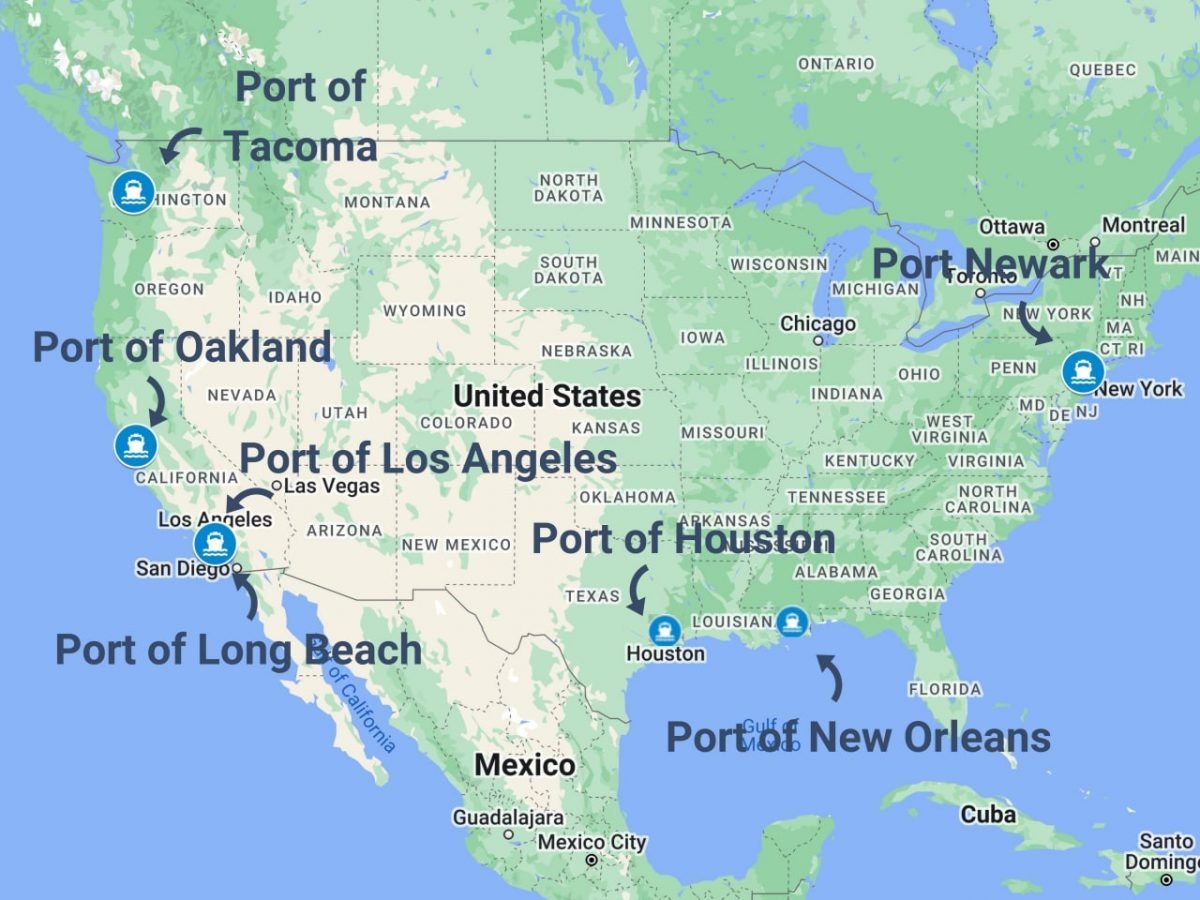
By the end of this guide, you will possess the expert knowledge needed to navigate the complexities of shipping from the U.S. to England efficiently. With the right information and resources at your disposal, you can streamline your shipping processes, reduce costs, and ensure that your goods arrive safely and on time. Whether you’re a seasoned exporter or venturing into international shipping for the first time, this guide will serve as your essential resource for success.
Table of Contents
- Your Complete Guide to shipping from us to england
- Understanding Your Shipping Options: A Detailed Comparison
- Deconstructing the Cost: A Full Pricing Breakdown
- Transit Time Analysis: How Long Will It Take?
- Navigating Customs Clearance: A Step-by-Step Guide
- A Practical Guide to Choosing Your Freight Forwarder
- Incoterms 2020 Explained for Shippers
- Risk Management: Identifying and Mitigating Common Shipping Problems
- Frequently Asked Questions (FAQs) for shipping from us to england
- Conclusion: Key Takeaways for Successful Shipping
- Important Disclaimer
Understanding Your Shipping Options: A Detailed Comparison
Overview of Shipping Methods from the U.S. to England
When shipping goods from the U.S. to England, businesses must navigate a variety of transportation methods, each with its own advantages and disadvantages. The choice of shipping method can significantly impact delivery speed, cost, and overall logistics strategy. Below is a comparison of the most common shipping methods used for international shipments.
| Shipping Method | Best For | Speed | Cost Level | Key Advantages | Key Disadvantages |
|---|---|---|---|---|---|
| Sea FCL | Large shipments | 20-40 days | Low | Cost-effective for bulk shipments | Slow transit time |
| Sea LCL | Smaller shipments | 30-50 days | Moderate | Flexibility for smaller loads | Higher cost per unit, potential delays |
| Air | Time-sensitive items | 1-3 days | High | Fast delivery, reliable service | Expensive, weight limitations |
| Rail | Heavy cargo | 5-15 days | Moderate | Reliable for landlocked areas | Limited routes, slower than air |
| Express | Urgent shipments | 1-2 days | Very High | Fast and door-to-door service | Very high costs, weight restrictions |
Detailed Breakdown of Each Method
Sea Freight Full Container Load (FCL)
What it is:
Shipping via FCL means that an entire container is reserved for your shipment. This is ideal for large volumes of cargo.
When to use it:
Choose FCL when you have enough cargo to fill a container, which can lead to cost savings.
Pros:
– Cost-effective for large shipments.
– Less risk of damage as the cargo is not shared with other shippers.
– Predictable delivery schedules.
Cons:
– Longer transit times compared to air and express methods.
– Requires a larger upfront commitment in terms of cargo volume.
Sea Freight Less than Container Load (LCL)
What it is:
LCL shipping allows you to share a container with other shippers. This is suitable for smaller shipments that do not fill a full container.
When to use it:
Use LCL for shipments that are too small for FCL but still significant enough to justify ocean freight.
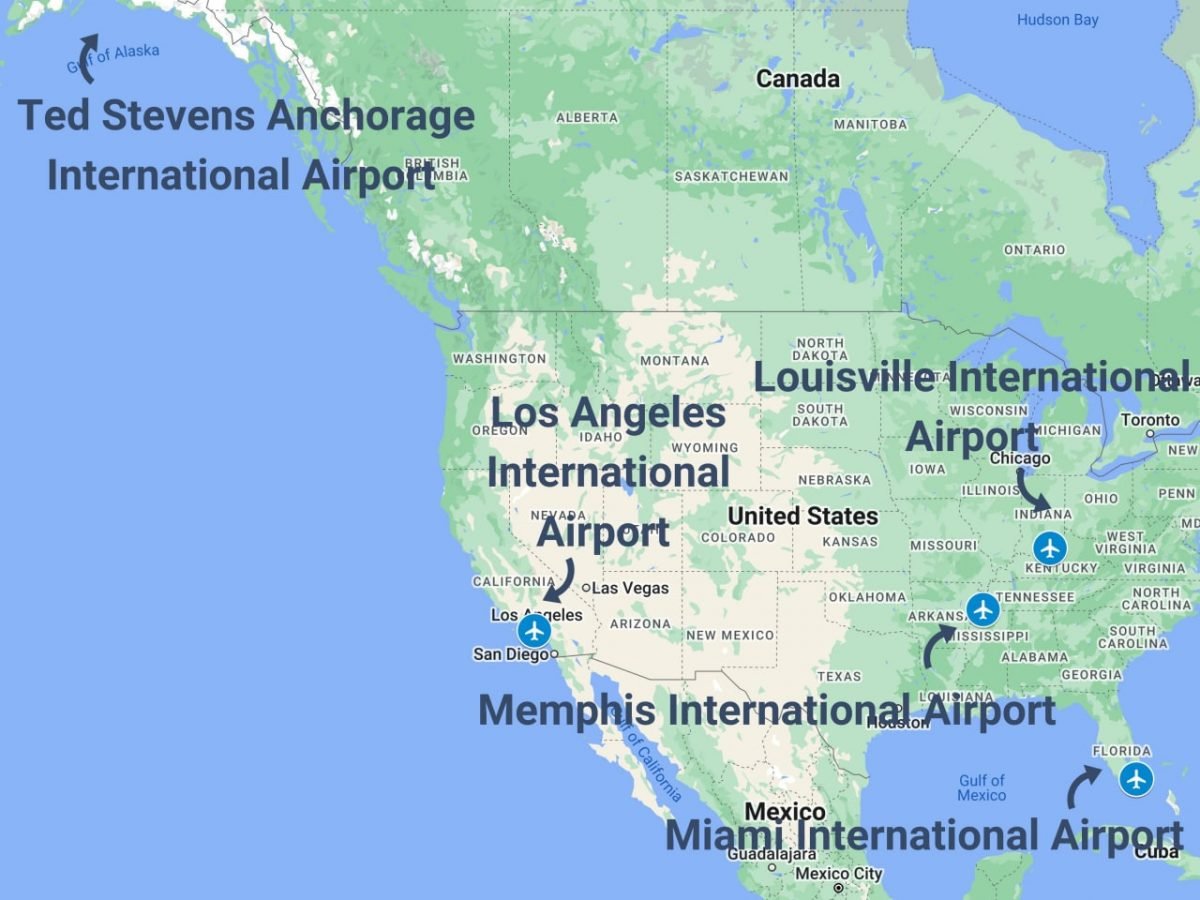
Pros:
– Flexibility for smaller shipments.
– Lower shipping costs compared to FCL for smaller loads.
Cons:
– Higher cost per unit than FCL.
– Longer transit times and potential delays due to consolidation and deconsolidation processes.
Air Freight
What it is:
Air freight involves transporting goods via commercial or cargo airlines, ideal for urgent shipments.
When to use it:
Select air freight when speed is critical, such as shipping perishable goods or urgent documents.
Pros:
– Fastest shipping method available.
– High reliability and tracking capabilities.
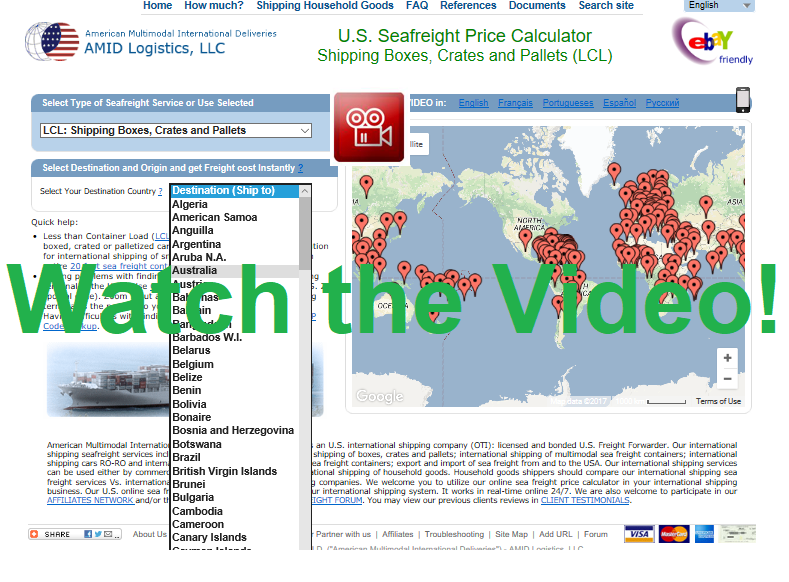
Cons:
– Significantly higher costs than sea freight.
– Weight and size limitations can restrict what can be shipped.
Rail Freight
What it is:
Rail freight utilizes trains to transport goods over land. It’s often used for heavy and bulk items.
When to use it:
Choose rail when shipping goods within North America that will later be sent to England, especially for large or heavy items.
Pros:
– Generally more cost-effective than truck transport for heavy cargo.
– Lower carbon footprint compared to road transport.
Cons:
– Limited routes; primarily effective in specific regions.
– Slower than air transport and can be affected by rail schedules.
Express Shipping
What it is:
Express shipping services provide expedited delivery, often door-to-door, through companies like DHL, FedEx, and UPS.
When to use it:
Use express shipping for urgent packages that must arrive quickly.
Pros:
– Fastest delivery options available.
– Comprehensive tracking and customer service.
Cons:
– Extremely high costs.
– Typically limited to smaller packages due to weight restrictions.
Special Considerations
Multimodal Transport
Multimodal transport combines different modes of transport (e.g., sea and rail, or air and truck) to optimize shipping efficiency. This method can be beneficial for reducing costs and improving delivery times. For instance, goods could be shipped by sea and then transferred to rail for final delivery in the UK.
Pros:
– Flexibility in choosing the best transport methods for each leg of the journey.
– Potential for cost savings by leveraging the strengths of each transport mode.
Cons:
– Complexity in logistics and coordination.
– Risk of delays during transfers between modes.
Specialized Shipping Options
Roll-on/Roll-off (RoRo):
RoRo is used for transporting vehicles and heavy machinery. Vehicles are driven directly onto the ship and secured for transport. This method is efficient for large vehicles but not suitable for conventional cargo.
Break Bulk:
For oversized or heavy items that cannot fit in standard containers, break bulk shipping involves transporting items individually. This method is often used for industrial equipment but requires careful handling and can be costly.
Key Considerations for Specialized Options:
– RoRo is cost-effective for vehicles but may not be available at all ports.
– Break bulk can lead to higher handling fees and longer loading/unloading times.
Conclusion
Choosing the right shipping method from the U.S. to England depends on various factors, including budget, speed requirements, and the nature of the goods being shipped. By understanding the advantages and disadvantages of each shipping option, businesses can make informed decisions that align with their logistics strategies and operational needs. Whether opting for cost-effective sea freight or the speed of air freight, careful planning and consideration will ensure successful international shipments.
Deconstructing the Cost: A Full Pricing Breakdown
Understanding the Costs of Shipping from the U.S. to England
Shipping goods internationally can be a complex endeavor, especially when navigating the costs involved. For businesses looking to ship from the U.S. to England, understanding the various cost components is crucial for effective budgeting and operational planning. This section breaks down the primary cost categories and provides insights into what influences these expenses.
Main Cost Components
When shipping internationally, there are three main cost components to consider:
- Main Freight
- Origin Charges
- Destination Charges
Each of these components plays a significant role in determining the overall shipping cost.
Main Freight
Main freight refers to the core transportation cost incurred for moving goods from the origin to the destination. This cost varies significantly based on the shipping method chosen—whether it’s sea freight, air freight, or courier services.
Influencing Factors:
- Shipping Method: Air freight is generally more expensive than sea freight due to speed and service level. For instance, while sea freight might take weeks, air freight could deliver in a matter of days.
- Weight and Volume: Heavier and larger shipments will incur higher freight costs. For air freight, costs are usually calculated based on dimensional weight, which considers both the actual weight and the volume of the shipment.
- Distance: The further the distance from the origin to the destination, the higher the freight cost will be.
- Carrier Selection: Different carriers have varying rates and service levels. Choosing a reputable carrier may come at a premium but can often ensure better reliability and service.
Origin Charges
Origin charges are fees that are incurred at the point of departure. These charges cover various services necessary to prepare the shipment for export.
Influencing Factors:
- Packaging: The cost of packaging materials and labor can vary based on the nature of the goods being shipped. Fragile items might require specialized packaging, increasing costs.
- Export Documentation: Fees associated with preparing customs documentation, bills of lading, and other necessary paperwork can add to the origin charges.
- Pickup Fees: If the shipment needs to be picked up from a location, additional fees may apply depending on the distance and the carrier’s policies.
- Insurance: Many businesses choose to insure their shipments for added security, which can also contribute to origin charges.
Destination Charges
Destination charges are fees incurred once the shipment arrives in England. These charges can include customs duties, taxes, and handling fees.
Influencing Factors:
- Customs Duties and Taxes: The UK imposes customs duties based on the value of the goods being imported. The specific rates depend on the type of goods and their country of origin. Businesses should consult the UK Customs Tariff to understand potential duties.
- Handling Fees: Warehousing or unloading fees may apply at the destination port or airport. These charges can differ based on the shipping company and the nature of the goods.
- Delivery Charges: If the shipment requires further transportation to reach its final destination, additional delivery charges will apply.
Example Pricing Table
The following table presents estimated shipping costs for sea and air freight from China to the USA. Note that these prices are subject to change based on various factors, including carrier rates, market conditions, and specific shipment details.
| Shipping Method | 20ft Container | 40ft Container | LCL (per CBM) | Air Freight (per kg) |
|---|---|---|---|---|
| Estimated Cost | $2,500 – $3,500 | $4,000 – $6,000 | $150 – $250 | $5 – $10 |
Disclaimer: The prices above are estimates and can vary significantly based on the carrier, current market rates, service levels, and specific shipment details. Always obtain a quote from your logistics provider for accurate pricing.
How to Reduce Costs
Reducing shipping costs is a key concern for businesses. Here are some actionable tips to help minimize expenses:
-
Consolidate Shipments: Whenever possible, consolidate smaller shipments into a larger one. This can reduce per-unit shipping costs and may allow you to take advantage of bulk shipping rates.
-
Choose the Right Shipping Method: Evaluate your shipping needs carefully. If time is not a critical factor, opt for sea freight over air freight to save on costs.
-
Negotiate Rates: Build relationships with freight forwarders and logistics providers to negotiate better rates based on your shipping volume and frequency.
-
Optimize Packaging: Use efficient packaging to minimize weight and volume, which can lead to lower freight costs. Consider using lightweight materials without compromising safety.
-
Understand Customs Regulations: Familiarize yourself with customs duties and taxes for your products. Proper classification and valuation can help avoid overpaying on duties.
-
Use Technology: Utilize shipping management software to compare rates from various carriers and manage shipments more effectively.
-
Plan Ahead: Timing your shipments can also affect costs. Avoid peak shipping seasons when rates are typically higher and plan for potential delays due to customs processing.
By understanding the cost components and implementing these strategies, businesses can better manage their shipping expenses and enhance their overall logistics efficiency.
Transit Time Analysis: How Long Will It Take?
Understanding Transit Times for Shipping from the U.S. to England
When planning shipments from the United States to England, understanding the transit times is crucial for effective logistics management. Various factors can influence how long it takes for your goods to arrive, and being aware of these can help you make informed decisions about your shipping strategy.
Factors Influencing Transit Time
-
Shipping Mode: The choice between air freight and sea freight significantly impacts transit times. Air freight is typically faster, taking anywhere from 3 to 10 days, while sea freight can range from 10 to 30 days, depending on the specific route and shipping line.
-
Port Congestion: Ports can experience congestion due to various reasons, such as increased shipping volumes, labor strikes, or adverse weather conditions. This congestion can lead to delays in loading and unloading cargo, impacting overall transit times.
-
Customs Clearance: Customs processes can vary widely between countries and can introduce delays. Shipments must go through customs clearance in both the U.S. and the U.K., and any discrepancies in documentation can lead to additional hold-ups.
-
Shipping Routes: The specific route taken by the shipping carrier can also affect transit times. Some routes may be more direct than others, or certain carriers may have more efficient schedules.
-
Weather Conditions: Weather events such as storms, heavy snowfall, or hurricanes can disrupt shipping schedules, especially for air freight. It’s essential to keep an eye on weather forecasts that may impact your shipments.
-
Handling and Processing Times: Depending on the nature of the goods being shipped, additional handling or processing times may be required. For instance, hazardous materials or perishable goods may require special handling that could prolong transit times.
Estimated Transit Time Table
Below is a table providing realistic estimates for shipping times from the U.S. to England, considering both air and sea freight options.
| Origin | Destination | Sea Freight (Days) | Air Freight (Days) |
|---|---|---|---|
| New York | London | 10-14 | 5-7 |
| Los Angeles | London | 12-20 | 6-8 |
| Chicago | London | 10-15 | 5-7 |
| Miami | London | 12-18 | 6-9 |
| Houston | London | 11-16 | 5-8 |
Context and Explanation
The estimates provided in the table represent port-to-port transit times and do not account for additional time required for customs clearance, local delivery, or potential delays. For example, while air freight from New York to London may take 5-7 days, it is crucial to factor in additional time for customs processing, which can vary based on the shipment’s nature and completeness of documentation.
To effectively plan your shipping schedule, consider building in extra time to accommodate potential delays. This is especially important for businesses that rely on just-in-time inventory systems or have strict deadlines for delivery. Keeping an open line of communication with your freight forwarder can help you stay updated on any changes that may impact transit times, allowing you to adjust your logistics plans accordingly.
In conclusion, understanding the various factors influencing transit times and utilizing the estimated times can significantly enhance your shipping strategy from the U.S. to England. By proactively managing these elements, businesses can reduce the risk of delays and ensure a smoother shipping process.
Navigating Customs Clearance: A Step-by-Step Guide
The Process Explained
Navigating customs clearance when shipping from the U.S. to England involves several critical steps to ensure your shipment arrives without unnecessary delays. Here’s a streamlined workflow to help you manage the process efficiently:
-
Prepare Your Shipment:
Begin by organizing your shipment details. This includes identifying the items to be shipped, their values, and their intended use (commercial or personal). Ensure that all items comply with U.S. export regulations and the UK import regulations. -
Complete Necessary Documentation:
Accurate documentation is vital for customs clearance. Prepare all required forms, including the Commercial Invoice, Packing List, and any additional documents that may be necessary based on the nature of the goods. -
Classify Your Goods:
Assign the appropriate Harmonized System (HS) codes to your products. These codes classify your goods for customs purposes and determine the applicable duties and taxes. -
Calculate Duties and Taxes:
Determine the duties and taxes that will be applied to your shipment. This includes understanding the tariff rates associated with your HS codes and calculating the total based on the declared value of the goods. -
Choose a Shipping Method:
Select a reliable shipping service that offers customs brokerage. Services like DHL or USPS provide options that include customs clearance assistance, ensuring that all documentation is submitted correctly. -
Submit Your Shipment:
Ship your package, ensuring that all documentation is included and accessible. If using a courier service, they will typically handle customs submission on your behalf. -
Track Your Shipment:
Utilize tracking tools provided by your shipping service to monitor your package. Stay informed about its status throughout the customs clearance process and be prepared to respond to any inquiries from customs authorities.
Essential Documentation
When shipping to England, several key documents are required for customs clearance. Each document serves a specific purpose:
-
Commercial Invoice:
This document details the transaction between the buyer and seller. It includes information such as the seller’s and buyer’s addresses, a description of the goods, their values, and payment terms. It is essential for calculating duties and taxes. -
Packing List:
A packing list provides a detailed account of the contents of your shipment. It includes item descriptions, quantities, weights, and dimensions. This document helps customs officials verify the shipment against the commercial invoice. -
Bill of Lading (BOL):
The BOL is a contract between the shipper and carrier that outlines the terms of transportation. It serves as a receipt for the goods and can be used to track the shipment. There are different types of BOLs (e.g., ocean, air) depending on the mode of transport. -
Customs Declaration:
Depending on the value and nature of the goods, you may need to submit a customs declaration form. This form provides additional details about the shipment and assists customs officials in assessing duties and taxes.
Duties, Taxes, and HS Codes
Understanding duties and taxes is crucial for international shipping:
-
Harmonized System (HS) Codes:
HS codes are standardized numerical methods of classifying traded products. They are used globally to determine the tariffs and taxes applicable to specific goods. Each product has a unique HS code that corresponds to its category, helping customs authorities assess the correct duties. -
Duties and Taxes Calculation:
Duties are tariffs imposed by the UK government on imported goods, while taxes may include VAT (Value Added Tax). The calculation is based on the declared value of the goods, including shipping costs. The formula generally follows this structure:
[
\text{Total Duties and Taxes} = (\text{Customs Value} \times \text{Duty Rate}) + \text{VAT}
]
The duty rates vary significantly based on the HS code assigned to the product.
Common Problems & Solutions
Despite careful preparation, issues can arise during the customs clearance process. Here are common problems and their solutions:
-
Incomplete Documentation:
Problem: Missing or incorrect documents can lead to shipment delays.
Solution: Double-check all documentation before shipping. Consider using a checklist to ensure that all required forms are completed accurately. -
Incorrect HS Code Classification:
Problem: Misclassification can result in incorrect duties and potential fines.
Solution: Research the correct HS code thoroughly. If unsure, consult with a customs broker or freight forwarder who can provide expert advice on classification. -
Unexpected Duties and Taxes:
Problem: Sudden changes in duties can lead to higher shipping costs than anticipated.
Solution: Stay updated on UK import regulations and tariff changes. Utilize tools or services that provide real-time updates on duties based on your HS codes. -
Customs Holds:
Problem: Customs may hold shipments for inspection, delaying delivery.
Solution: Ensure that all items comply with UK regulations, particularly regarding prohibited and restricted goods. Providing a complete and accurate description in your documentation can help minimize holds. -
Misinformation from Carriers:
Problem: Inconsistent information from shipping carriers can cause confusion.
Solution: Choose reputable carriers with proven track records in customs clearance. Maintain clear communication with your carrier and confirm details regarding shipping and customs processes.
By following these guidelines, you can navigate the customs clearance process more effectively, ensuring a smooth shipping experience from the U.S. to England. Proper preparation and understanding of the requirements will help you avoid common pitfalls and facilitate timely delivery of your goods.
A Practical Guide to Choosing Your Freight Forwarder
Understanding the Importance of Choosing the Right Freight Forwarder
Shipping from the U.S. to England involves navigating a complex web of logistics, customs, and regulations. Selecting the right freight forwarder can streamline this process, ensuring that your goods arrive safely and on time. A competent freight forwarder acts as a vital partner in your supply chain, managing everything from documentation to transportation logistics.
Key Qualities to Look For in a Freight Forwarder
When selecting a freight forwarder, consider the following essential attributes:
-
Experience and Expertise: Look for a freight forwarder with a proven track record in international shipping, particularly to the UK. Their experience in handling various types of cargo and navigating customs procedures is crucial.
-
Extensive Network: A strong global network can facilitate quicker transit times and better rates. A forwarder with established relationships with carriers, customs brokers, and other logistics providers will have the resources to handle your shipments more efficiently.
-
Licensing and Certifications: Ensure that the freight forwarder is properly licensed and certified. In the U.S., they should have a Federal Maritime Commission (FMC) license for ocean freight and be registered with the Transportation Security Administration (TSA) for air freight.
-
Communication Skills: Effective communication is vital in logistics. Your freight forwarder should provide clear and timely updates throughout the shipping process, helping you stay informed about your shipment’s status.
-
Technology Integration: A forwarder that utilizes technology for tracking and inventory management can offer greater visibility into your shipments. Look for platforms that provide real-time updates and analytics.
Sourcing Checklist: Steps to Choose Your Freight Forwarder
To ensure you select the right freight forwarder for shipping from the U.S. to England, follow these action steps:
-
Define Your Shipping Needs: Determine the specifics of what you need to ship, including the type of goods, volume, frequency of shipments, and any special requirements (like temperature control or hazardous materials).
-
Research Potential Forwarders: Use online resources, industry directories, and referrals from colleagues or business networks to identify potential freight forwarders. Pay attention to their areas of specialization and reputation in the industry.
-
Request Quotes: Contact multiple freight forwarders to request quotes. Make sure to provide detailed information about your shipment to receive accurate pricing. Compare not only costs but also service offerings.
-
Ask Questions: Inquire about their experience with customs clearance, handling delays, and any additional services they provide, such as insurance and warehousing. Understand their processes for dealing with issues that may arise.
-
Check References: Request references from previous clients, particularly those who have shipped similar goods. A reputable forwarder should be willing to provide this information to verify their reliability and service quality.
Red Flags to Watch Out For
While searching for the right freight forwarder, be aware of the following warning signs that may indicate potential issues:
-
Lack of Transparency: If a freight forwarder is unwilling to provide clear information about their services, pricing, or procedures, this could be a red flag. Transparency is crucial in logistics.
-
Poor Communication: Delayed responses or unclear answers to your questions can indicate that the freight forwarder may not prioritize customer service.
-
No Physical Address: A legitimate freight forwarder should have a physical office location. If they only provide a P.O. Box or lack a verifiable address, proceed with caution.
-
Unlicensed Operations: Ensure that the forwarder has the necessary licenses. If they cannot provide proof of licensing, it may be safer to look elsewhere.
-
Negative Reviews or Complaints: Research online reviews and check for any complaints filed against the forwarder. A pattern of negative feedback can indicate systemic issues.
-
High Pressure Sales Tactics: Be wary of forwarders that pressure you into making quick decisions or signing contracts without giving you ample time to review their terms and services.
Conclusion
Choosing the right freight forwarder for shipping from the U.S. to England is a critical decision that can impact the efficiency and cost-effectiveness of your operations. By focusing on key qualities, following a structured sourcing checklist, and being vigilant for red flags, you can find a reliable partner to help navigate the complexities of international shipping. With the right freight forwarder at your side, you can streamline your logistics process and focus on growing your business.
Incoterms 2020 Explained for Shippers
Understanding Incoterms 2020 for International Shipping
When engaging in international shipping, particularly from the U.S. to England, understanding Incoterms is crucial for both importers and exporters. Incoterms, short for International Commercial Terms, are standardized trade terms that define the responsibilities of buyers and sellers in international transactions. Established by the International Chamber of Commerce (ICC), these terms help clarify shipping costs, risks, and responsibilities, thus facilitating smoother trade.
Key Incoterms Table
| Incoterm | Who Pays for Transport? | Where Risk Transfers? | Best for |
|---|---|---|---|
| EXW | Buyer | At the seller’s premises | Buyers who want maximum control |
| FOB | Seller | At the ship’s rail or port | Buyers wanting seller-managed transport |
| CIF | Seller | At the destination port | Buyers seeking a comprehensive package |
| DDP | Seller | At the buyer’s premises | Buyers wanting all-inclusive delivery |
Detailed Explanation of Common Incoterms
EXW (Ex Works)
Under the EXW Incoterm, the seller’s responsibility is minimal. The seller makes the goods available at their premises or another named place (factory, warehouse, etc.). The buyer assumes all risks and costs associated with transporting the goods from that point onward. For example, if a company in Australia purchases machinery from a U.S. supplier under EXW terms, the Australian buyer must arrange and pay for all transportation, insurance, and customs clearance from the U.S. supplier’s location to their own facility in Australia. This term is ideal for buyers who want maximum control over the shipping process but requires them to handle all logistics and risks.
FOB (Free On Board)
FOB terms require the seller to cover all costs and risks until the goods are loaded onto the vessel at the port of shipment. Once the goods are on board, the risk transfers to the buyer. This arrangement is common in bulk shipments. For instance, a Brazilian exporter shipping coffee beans to England might use FOB. The seller would be responsible for transport to the port and loading onto the ship, while the buyer would take on responsibility once the goods are loaded. This term is advantageous for buyers who want to manage shipping after the goods are on board but prefer the seller to handle logistics up to that point.
CIF (Cost, Insurance, and Freight)
CIF is an Incoterm where the seller covers the costs of transport, insurance, and freight to the destination port. The risk transfers to the buyer once the goods are loaded onto the vessel, but the seller must also procure insurance against loss or damage during transit. For example, if a Nigerian importer orders electronics from the U.S. under CIF terms, the U.S. seller would handle shipping and insurance to the port in England. This option is ideal for buyers who prefer a more hands-off approach, as it reduces their logistical burden while ensuring the goods are insured during transit.
DDP (Delivered Duty Paid)
DDP is the most seller-friendly Incoterm, where the seller assumes all responsibilities, risks, and costs associated with transporting the goods to the buyer’s location, including customs duties and taxes. For instance, if a U.S. company sells specialized software equipment to a business in England under DDP terms, the U.S. seller is responsible for delivering the equipment to the buyer’s premises, clearing customs, and paying any applicable duties. This term is particularly beneficial for buyers who want a hassle-free experience, as it places the entire shipping process in the hands of the seller.
Conclusion
Understanding and selecting the right Incoterms when shipping from the U.S. to England can significantly impact the efficiency and cost-effectiveness of your international trade operations. By clearly defining roles and responsibilities, Incoterms minimize misunderstandings and disputes, allowing businesses from countries like Australia, Nigeria, and Brazil to navigate the complexities of global shipping with confidence. Whether you choose EXW, FOB, CIF, or DDP, make sure to align your choice with your business’s logistical capabilities and risk tolerance.
Risk Management: Identifying and Mitigating Common Shipping Problems
Introduction
Shipping goods internationally involves numerous complexities and inherent risks. For businesses looking to ship from the U.S. to England, proactive risk management is crucial for ensuring smooth operations and maintaining customer satisfaction. By identifying potential risks before they arise, businesses can implement strategies to mitigate their impact. This approach not only protects the shipment but also enhances the overall efficiency of the supply chain. Understanding risks such as cargo damage, delays, and customs issues can save businesses time and money, making risk management an indispensable part of international shipping strategies.
Risk Analysis Table
| Potential Risk | Impact | Mitigation Strategy |
|---|---|---|
| Cargo Damage | Loss of inventory and increased costs due to replacements. | Use high-quality packaging materials and ensure proper labeling. Consider cargo insurance for added protection. |
| Delays | Disruption in supply chain leading to customer dissatisfaction. | Choose reliable carriers with proven track records. Monitor shipment status regularly and communicate updates to customers. |
| Customs Holds | Shipment can be delayed or returned due to improper documentation. | Ensure all paperwork, including customs forms and commercial invoices, is accurate and complete. Stay updated on regulations. |
| Regulatory Compliance | Fines or legal issues can arise from non-compliance with international shipping laws. | Conduct thorough research on shipping regulations in both the U.S. and the UK. Consult with a logistics expert if needed. |
| Unexpected Costs | Unforeseen expenses can erode profit margins. | Obtain detailed quotes from carriers, including duties and taxes. Factor these into pricing strategies and maintain a contingency budget. |
| Theft or Loss | Financial losses and potential damage to brand reputation. | Utilize tracking services, secure storage facilities, and reliable transport options. Implement security measures during transit. |
Cargo Insurance Explained
Cargo insurance is a critical component of risk management when shipping goods internationally. This insurance protects against the financial loss of goods during transit due to various risks, including theft, damage, or loss. Understanding the different types of cargo insurance and what they cover is essential for businesses engaged in international shipping.
Types of Cargo Insurance
-
All-Risk Coverage: This is the most comprehensive form of cargo insurance, covering a wide range of risks, including damage from accidents, theft, and natural disasters. However, certain exclusions may apply, such as war or inherent vice.
-
Named Perils Coverage: This type of insurance covers only specific risks that are explicitly listed in the policy. While it is typically less expensive than all-risk coverage, it offers limited protection.
-
Total Loss Coverage: This insurance is designed for situations where the cargo is completely lost, either due to theft or destruction. It does not cover partial losses.
-
General Average Coverage: This type of insurance applies to situations where a deliberate sacrifice of cargo is made to save the vessel or other cargo. It ensures that all parties share the loss proportionately.
Why Cargo Insurance is Essential
-
Financial Protection: The primary benefit of cargo insurance is the financial safety net it provides. In the event of damage or loss, businesses can recover the value of their goods, preventing significant financial setbacks.
-
Peace of Mind: Knowing that goods are insured allows businesses to focus on their core operations without the constant worry of potential losses during transit.
-
Enhanced Credibility: Having cargo insurance can enhance a business’s credibility with customers and partners, showcasing a commitment to risk management and reliability.
-
Compliance and Requirements: Certain contracts or agreements may require businesses to have insurance for shipments. Ensuring compliance with these requirements can facilitate smoother transactions.
Conclusion
Navigating the complexities of international shipping from the U.S. to England involves understanding and managing various risks. By identifying potential issues and implementing effective mitigation strategies, businesses can protect their shipments and ensure operational efficiency. Cargo insurance is a vital tool in this risk management arsenal, providing essential coverage and peace of mind. As businesses strive to expand their reach across borders, prioritizing risk management will be key to achieving sustained success in the global marketplace.
Frequently Asked Questions (FAQs) for shipping from us to england
1. What are the shipping options available for sending packages from the U.S. to England?
There are several shipping options available for sending packages from the U.S. to England, including services offered by USPS, DHL, FedEx, and UPS. Common services include Priority Mail Express International, Priority Mail International, and First-Class Package International Service via USPS, as well as various express and economy options through DHL and other carriers. The choice of service often depends on the delivery speed, budget, and specific needs such as tracking and insurance.
2. How long does it typically take for packages to arrive in England from the U.S.?
Delivery times vary based on the shipping method chosen. For example, Priority Mail Express International typically takes 3-5 business days, while Priority Mail International may take 6-10 business days. Express services from carriers like DHL can offer faster delivery, sometimes within 1-3 business days, depending on the destination in England and customs processing.
3. How is shipping cost calculated when sending packages to England?
Shipping costs are calculated based on several factors, including package weight, dimensions, shipping method, and destination. Most carriers provide online calculators to help estimate shipping costs. Additional fees may apply for services like tracking, insurance, and customs duties.
4. What are customs duties and taxes for shipments to England?
Customs duties and taxes are fees imposed by the UK government on imported goods. These fees are typically based on the value of the goods and their classification under the Harmonized System. As a shipper, you may need to pay these duties upfront, or the recipient may be responsible for them upon delivery. It’s crucial to provide accurate customs declarations to avoid delays.
5. What is the difference between a Bill of Lading (BOL) and an Air Waybill (AWB)?
A Bill of Lading (BOL) is a document used in freight shipping that serves as a contract between the shipper and the carrier, detailing the type, quantity, and destination of the goods. An Air Waybill (AWB), on the other hand, is specifically used for air cargo and acts as a receipt for the shipment. Both documents are important for tracking and managing shipments but are used in different contexts.
6. Are there restrictions on what can be shipped to England?
Yes, there are restrictions on certain items that can be shipped to England. Prohibited items include illegal substances, counterfeit goods, and certain hazardous materials. Additionally, some goods may require special permits or certifications. It’s essential to check the UK government’s guidelines and your chosen carrier’s policies before shipping.
7. How do I prepare a package for shipping to England?
To prepare a package for shipping to England, ensure the following:
– Use a sturdy box or envelope appropriate for the contents.
– Clearly label the package with the recipient’s address, including the postal code.
– Complete the necessary customs forms, providing accurate descriptions and values for the items.
– Consider adding insurance and tracking for valuable items.
8. What information is required on customs forms for shipments to England?
Customs forms must include detailed information about the contents of the package, including the description of each item, its value, and the purpose of the shipment (e.g., gift, sale, personal use). Accurate and complete information helps facilitate smooth customs processing and reduces the risk of delays or fines.
9. What is chargeable weight, and how does it affect shipping costs?
Chargeable weight is the weight used by carriers to calculate shipping costs, which may be based on either the actual weight or the dimensional weight of the package, whichever is greater. Dimensional weight is calculated based on the size of the package, reflecting the space it occupies in transit. Understanding chargeable weight can help shippers optimize packaging to reduce costs.
10. How can I track my shipment to England?
Most carriers provide tracking services for international shipments. After sending your package, you’ll receive a tracking number that can be used on the carrier’s website or mobile app to monitor the shipment’s progress. Some carriers also offer notifications via email or SMS to keep you updated on the status of your delivery.
Conclusion: Key Takeaways for Successful Shipping
Essential Insights for Efficient Shipping from the U.S. to England
Navigating the complexities of international shipping from the U.S. to England can seem daunting, but with careful planning and the right partnerships, you can streamline the process and ensure successful deliveries. Here are the key takeaways to keep in mind:
Strategic Planning
Effective shipping begins with thorough planning. Assess your shipping needs by considering the type of goods, delivery timelines, and destination specifics. Different carriers offer various services, such as DHL’s expedited delivery options and USPS’s affordable rates for lighter packages. Understanding the nuances of your shipment will help you select the most suitable service, whether it’s for urgent parcels or bulk shipments.
Choosing the Right Partners
Selecting a reliable shipping partner is crucial. Companies like DHL and USPS provide extensive networks and resources tailored for shipping to the UK. Leverage their expertise in customs processes to minimize delays and ensure compliance with regulations. Additionally, consider seeking specialized freight forwarding services that cater to your industry, as they can provide insights on packaging requirements and documentation essential for smooth customs clearance.
Cost Management
Shipping costs can vary significantly based on weight, delivery speed, and service type. Use cost estimation tools provided by carriers to budget accurately and explore options like flat-rate shipping for predictable expenses. Be mindful of potential duties and taxes that may apply upon arrival in the UK, and factor these into your overall shipping strategy to avoid unexpected costs.
In conclusion, successful shipping from the U.S. to England hinges on strategic planning, the right partnerships, and vigilant cost management. By taking these steps, you can enhance your shipping efficiency and ensure your goods arrive safely and on time.
Take Action Today!
Start your shipping journey with confidence. Evaluate your needs, choose a trusted partner, and explore your options. The world of international shipping is within your reach—let’s make it work for you!
Important Disclaimer
⚠️ Important Disclaimer
The information in this guide is for educational purposes only and does not constitute professional logistics advice. Rates, times, and regulations change frequently. Always consult with a qualified freight forwarder for your specific needs.
